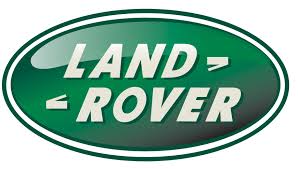L322 Range Rover System Description and Operation

BRAKES
70-28
DESCRIPTION AND OPERATION
Electronic Brake Distribution (EBD)
Electronic brake proportioning allows the DSC system to adjust the braking force to the rear wheels based on the
vehicles loading to maximize the braking force at all wheels.
The ABS control module monitors the wheel speed sensors inputs when the brakes are applied, for activation of this
feature. The control module compares the speed at which the front and rear axles are slowing down to determine
vehicle loading.
If the rear axle is slowing at a similar rate to the front, it indicates that the vehicle is loaded and braking force need not
be limited to the rear axle.
If the deceleration of the rear axle is greater than the front, the vehicle is lightly laden and less force can be applied
to the rear. If the same force were applied, then the vehicle could become unstable.
The values for the relative deceleration are programmed in the ABS ECU. Equal force will be applied to the front and
rear axles until the threshold values are exceeded. At this point, the ABS ECU will cycle the inlet valves at the rear
calipers to limit or reduce the braking force on the rear axle.
Emergency Brake Assist (EBA)
The EBA is designed to enhance the braking control of the DSC for the driver of the vehicle. The EBA includes two
functions that are programmed into the control electronics of the ABS ECU with no additional hardware changes.
The first EBA function is designed to provide the maximum braking force available during rapid (panic) braking
situations. The ABS control module looks at the inputs from the brake pedal switch and the signal from the brake
pressure sensor on the master cylinder. The criteria for activation of EBA is the speed at which brake pressure builds
up with the brake pedal depressed. The total criteria required for EBA activation includes:
l
Brake switch ON
l
Brake pressure build up >threshold value
l
Vehicle road speed >5mph (8 km/h)
l
Vehicle not in reverse
l
Not all wheels in ABS operation.
If the threshold for EBA activation is achieved, the ABS control module will activate a pressure build up regulation
phase through the hydraulic unit. The pressure at all wheels is increased up to the ABS operation point. This occurs
even if the driver does not achieve the ABS operation point with the pedal.
The front and rear axle brakes are controlled individually. ABS operation will continue until the driver releases the
pedal and the pressure in the master cylinder drops below the threshold value stored in the ABS ECU.
The second EBA function is also designed to enhance a driver initiated braking procedure. The EBA will build up the
pressure in the rear brake circuit when the front brakes are already in an ABS regulation cycle. The additional braking
pressure at the rear wheels will shorten the stopping distance. The following criteria must be met before the ABS
control module will activate EBA:
l
Both front wheel brakes in ABS operation
l
Vehicle speed >5mph (8km/h)
l
Vehicle not in reverse
l
EBA and pressure sensor initialisation test OK
l
Rear wheels not in ABS operation.
EBA sensitivity can be adjusted using TestBook/T4. There are three sensitivity settings, default is the most sensitive.
Hill Descent Control (HDC)
Hill Decent Control (HDC) is designed for off road use to automatically slow the vehicle and maintain a steady speed
on steep gradients. This function allows the driver to focus on steering and controlling the vehicle without having to
use the brakes to slow the vehicle.
